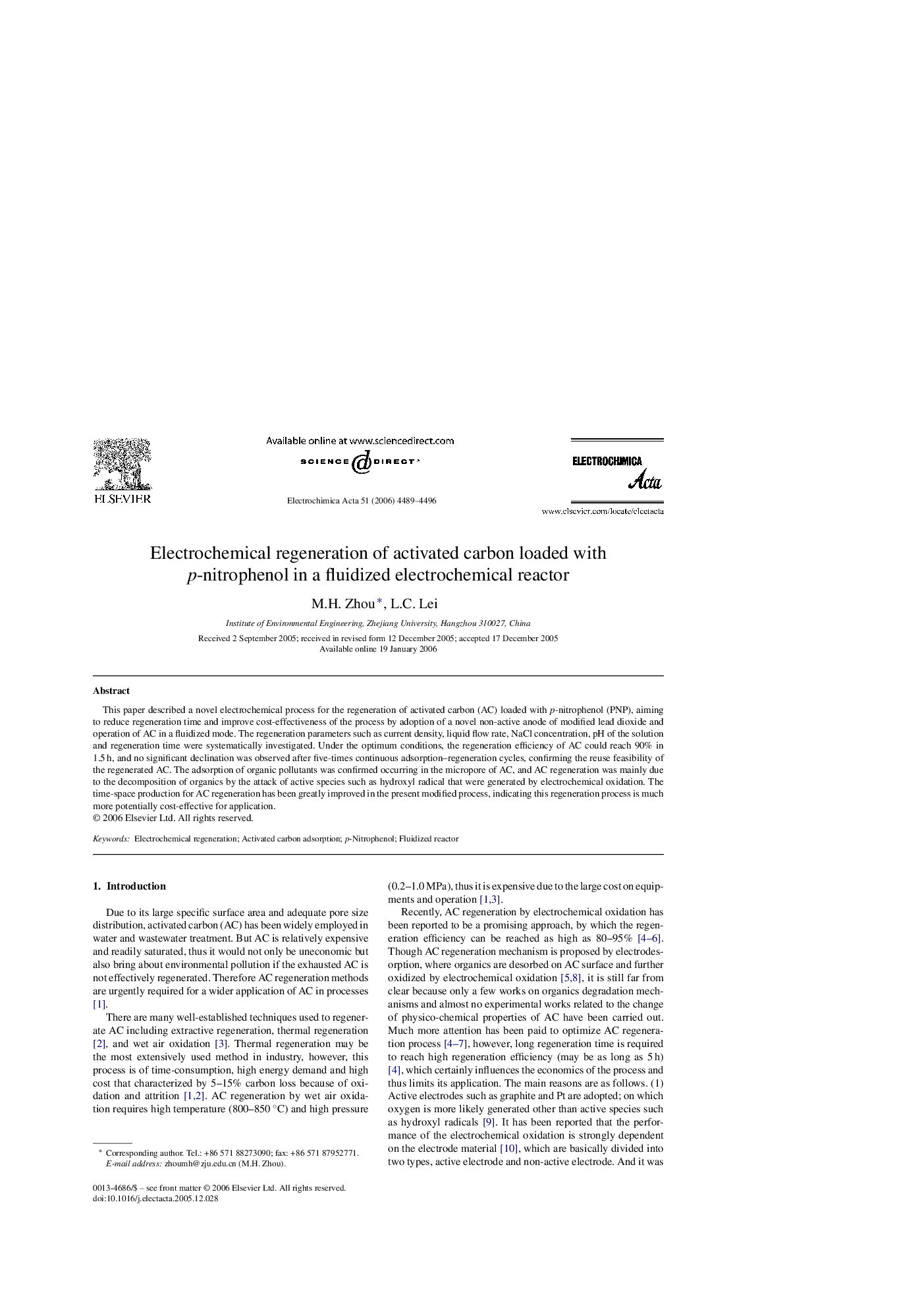| Article ID | Journal | Published Year | Pages | File Type |
|---|---|---|---|---|
| 195505 | Electrochimica Acta | 2006 | 8 Pages |
This paper described a novel electrochemical process for the regeneration of activated carbon (AC) loaded with p-nitrophenol (PNP), aiming to reduce regeneration time and improve cost-effectiveness of the process by adoption of a novel non-active anode of modified lead dioxide and operation of AC in a fluidized mode. The regeneration parameters such as current density, liquid flow rate, NaCl concentration, pH of the solution and regeneration time were systematically investigated. Under the optimum conditions, the regeneration efficiency of AC could reach 90% in 1.5 h, and no significant declination was observed after five-times continuous adsorption–regeneration cycles, confirming the reuse feasibility of the regenerated AC. The adsorption of organic pollutants was confirmed occurring in the micropore of AC, and AC regeneration was mainly due to the decomposition of organics by the attack of active species such as hydroxyl radical that were generated by electrochemical oxidation. The time-space production for AC regeneration has been greatly improved in the present modified process, indicating this regeneration process is much more potentially cost-effective for application.
